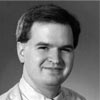Seminars
Synthetic Biology: A New Application Area for Design Automation Research PDF slides
Chris J. Myers
University of Utah
12/10/2009 – 2pm, GHC 6115.
Abstract
Electronic Design Automation (EDA) tools have facilitated the design of ever more complex integrated circuits each year. Synthetic biology would also benefit from the development of Genetic Design Automation (GDA) tools. Synthetic biology has the potential to help us produce drugs more economically, metabolize toxic chemicals, and even modify bacteria to hunt and kill tumor cells. There are, however, numerous challenges to design the genetic circuits used in these applications. First, existing GDA tools require biologists to design and analyze genetic circuits at the molecular level, roughly equivalent to the layout level for electronics circuits. Another serious challenge is that genetic circuits are composed of very noisy components making their behavior more asynchronous, analog, and non-deterministic in nature. New GDA tools must address these challenges. This talk presents our research in the development of iBioSim, a GDA tool that supports higher levels of abstraction. This talk also demonstrates the application of this tool to the design of a genetic Muller C-element for use as a quorum trigger.
Biography
 Chris J. Myers received the B.S. degree in electrical engineering and Chinese history in 1991 from the California Institute of Technology, Pasadena, CA, and the M.S.E.E. and Ph.D. degrees from Stanford University, Stanford, CA, in 1993 and 1995, respectively. He is a Professor in the Department of Electrical and Computer Engineering, University of Utah, Salt Lake City, UT. Dr. Myers is the author of over 90 technical papers and the textbooks Asynchronous Circuit Design and Engineering Genetic Circuits. He is also a co-inventor on 4 patents. His research interests include asynchronous circuit design, formal verification, and modeling, analysis, and design of genetic circuits. Dr. Myers received an NSF Fellowship in 1991, an NSF CAREER award in 1996, and best paper awards at Async99 and Async2007.
Chris J. Myers received the B.S. degree in electrical engineering and Chinese history in 1991 from the California Institute of Technology, Pasadena, CA, and the M.S.E.E. and Ph.D. degrees from Stanford University, Stanford, CA, in 1993 and 1995, respectively. He is a Professor in the Department of Electrical and Computer Engineering, University of Utah, Salt Lake City, UT. Dr. Myers is the author of over 90 technical papers and the textbooks Asynchronous Circuit Design and Engineering Genetic Circuits. He is also a co-inventor on 4 patents. His research interests include asynchronous circuit design, formal verification, and modeling, analysis, and design of genetic circuits. Dr. Myers received an NSF Fellowship in 1991, an NSF CAREER award in 1996, and best paper awards at Async99 and Async2007.
 Supported by an Expeditions in Computing award from the
Supported by an Expeditions in Computing award from the